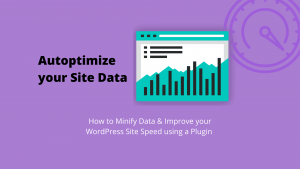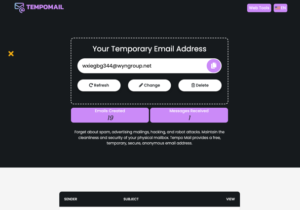A Portable Document Format (PDF) is more than images of documents, as these files can embed type fonts. Hence, they are available at any viewing location and interactive elements. So, a PDF is a file format that has captured all the elements of a printed document as an electronic image that users can view, navigate, print, or forward to someone else. Most of us have already used these files.
However, PDF files are more than images of documents. Files can embed type fonts to be available at any viewing location. They can also include interactive elements, such as buttons for form entry and triggering sound or video. PDF is an abbreviation that stands for Portable Document Format. It’s a versatile file format created by Adobe that gives people an easy, reliable solution.
A way to present and exchange documents — regardless of the software, hardware, or operating systems used by anyone who views the document. In 1991, Adobe co-founder Dr. John Warnock launched the paper-to-digital revolution with an idea he called The Camelot Project. The goal was to enable anyone to capture documents from any application and send them electronically anywhere.
In addition, the idea was to help view and print the electronic versions of these documents on any machine. By 1992, Camelot had developed into PDF. Today, it is the file format trusted by businesses around the world. In this article, you’ll learn how electronic documents can streamline business processes and filing systems while ensuring simple and secure access to your partners.
Understanding The Portable Document Format (PDF) Role In Content Publishing
By definition, a Portable Document Format (PDF) is a versatile file format created by the likes of application platforms such as Adobe that gives people an easy, reliable way to present and exchange documents — regardless of the software, hardware, or operating systems being used by anyone who views the document. The PDF format is now an open standard maintained by the ISO team.
It’s important to realize that PDF documents can contain links and buttons, form fields, audio, video, and business logic. However, they can be signed electronically and easily viewed on Windows or MacOS using the free Adobe Acrobat Reader software. Adobe partners with leading companies so you can add Adobe Document Cloud’s PDF tools to the applications your teams already use.
The main benefit is that PDFs are sound for documents such as magazine articles, product brochures, or flyers where the creator wants to preserve the original graphic appearance online. PDFs also help with downloaded and printed documents, such as resumes, contracts, and application forms. They also support embedding digital signatures in documents to authenticate docs’ integrity.
With PDF tools embedded in Microsoft 365, you can instantly convert Microsoft Word documents, Excel files, or PowerPoint presentations to PDF format to simplify and streamline your workflows. Many third-party tools automate the processes of PDF creation, editing, content extraction, and mass processing of PDFs. Today, there are many situations in which PDF files are desirable.
Such as the following:
- When users want to preserve the original formatting of a document, for example, if they created a resume using a word processing program and saved it as a PDF, the recipient sees the same fonts and layout that the sender used.
- When users want to send a document electronically, a PDF file ensures that the recipient sees it exactly as the sender intended it to look.
- In addition, when a user wants to create a document that cannot be easily edited. For example, if they wanted to send someone a contract but didn’t want them to change it, the creator could save it as a PDF.
Note: In 1993, Adobe promoted the open development of PDF tools after it made the file specification public and eventually handed it over to ISO in the 2000s. Through the years, its PDF tools evolved from desktop to server and cloud apps and are now morphing into web services and APIs. With that in mind, below are a few features that make the Portable Document Format (PDF) stick.
1. Easy Portable Document Format (PDF) Document Conversion
Warnock’s vision continues to shape the way we work. Creating an Adobe PDF from documents or images looks just how you intended. While many PDFs are simply pictures of pages, Adobe PDFs preserve all the data in the original file format—even when text, graphics, spreadsheets, and more are combined in a single file.
2. Portable Document Format (PDF) Files Meet High Standards
You can be confident your PDF file meets ISO 32000 standards for electronic document exchange, including special-purpose standards such as PDF/A for archiving, PDF/E for engineering, and PDF/X for printing. You can also create PDFs to meet accessibility standards that make content more usable by people with disabilities.
3. Enjoy Paperless Document Files And Seamless Workflows
When you need to sign a PDF electronically, using the Adobe Acrobat Reader Mobile App or the Acrobat Sign Mobile App is easy. Access your PDFs from any web browser or operating system. Try Adobe Acrobat or Acrobat Sign to see everything in full action and real-time to manage legally binding electronic or digital signature processes.
4. Scan Your Document Files And Simplify Your Work Process
You can scan paper documents and forms to save them as Adobe PDFs and get innovative files that are easy to search, share, and store. Adobe PDFs uses the Optical Character Recognition (OCR) technology, so you can edit and comment on the documents you’ve scanned. More than a PDF viewer, Adobe Acrobat Pro is a complete PDF solution that lets you create, edit, and convert PDF files to other formats.
5. Sifting For Hidden Data With Portable Document Format (PDF)
During data cleaning, there’s a way to extract valuable hidden data for businesses. Sometimes, data lives in formats that take extra work to ingest. Shared libraries already have readers for standard and explicitly data-oriented formats. A more incredible difficulty often arises because a given format is not a data format per se but exists for a different purpose. Nonetheless, data is often somehow embedded or encoded in a usable format. For example, a Portable Document Format (PDF) is generally designed for human readers and often contains tabular or other data we would like to process. Of course, we would rather have the data in some separate, easily ingestible format in both cases.
How The PDF Document Files Are Created
PDF files are created using tools such as Adobe Acrobat or other software that can save documents in PDF. To view saved PDF files, users need either the complete Acrobat program, which is not accessible, or a less expensive program, such as Adobe Reader, which is free from Adobe. PDF files can also be viewed in web browsers like Google Chrome, Firefox, and Microsoft Edge.
As a rule of thumb, a PDF file contains one or more page images, each of which users can zoom in on or out of. At the same time, they can also scroll backward and forward through the pages of a PDF. When you work with electronic documents, making protection a part of your routine is essential. You can password-protect your PDF files to prevent others from copying and editing.
Redact them to delete sensitive information permanently. And even find and remove hidden data. PDF files can be converted to other formats, such as Microsoft Word or Excel, or image formats, such as JPG, PNG, WebP Image, etc. However, the conversion process may not preserve the original document’s format perfectly. The next question is how do you save a document file as a PDF?
To Save A File In Portable Document Format (PDF):
- Open the document you want to save as a .pdf
- Click the File tab
- Click Save As (choosing Save As keeps your original version and allows you to save another copy in another file format.)
- In the File Name box, enter a name for the file if you haven’t already
- Click the drop-down arrow in the Save as Type box and click PDF (*.pdf) - If you don’t see this as an option in the menu, ensure you have the free Adobe Reader software installed on your computer.
- If you want the file to open immediately in the selected format after saving, select the Open file after publishing check box.
- Click the Options box for other available options
- Click Save
NB: You may also see an option to “Export” your document/file to a PDF in your File menu. You can use that option instead of following the “save as” instructions. In addition, some programs allow you to choose Print and then select Save as PDF as the printer. Each of these methods will result in a new file in the PDF format. It is possible to open a .pdf in Microsoft Word to convert it back to the .docx format and edit it. The following dialog box appears:
We recommend two open-source tools for extracting data from PDFs: the command-line tool pdftotext, which is part of the Xpdf and derived Poppler software suites. The second is a Java tool called tabula-java. Tabula-java is, in turn, the underlying engine for the GUI tool Tabula and also has language bindings for Ruby (tabula-extractor), Python (tabula-py), R (tabulizer) and Node.js (tabula-js).
Protecting Your Portable Document Format (PDF) Files Data With Password
The main disadvantage is that PDFs are not editable. If an individual needs to change a document after it has been saved as a PDF, they must return to the original program used to create it and make the changes there. Then, they need to resave the new PDF image. Another disadvantage is that some older software versions cannot read PDFs. Also, to open a PDF, recipients must have a reader.
In addition, it’s also necessary to realize that your Portable Document Format (PDF) files can sometimes contain viruses that can harm your computer. Be that as it may, ensuring recipients trust the source of any PDF files they download is crucial. Notwithstanding, PDF document files can be password-protected, so anyone who tries to open the file needs a password to access them.
Technically, according to TechTarget, a password is simply an application tool that offers a variety of methods known as challenge-response authentication to the end user. While using verbal, written, or even a typed code in this case — to satisfy the challenge request. The order and variety of characters often determine the difficulty or security strength of any given password terms.
That’s why security systems often require users to create passwords that use at least one capital letter, number, and symbol. For a password to be an effective security mechanism, its details must be kept secret. Otherwise, unauthorized users could access the files and securities one is trying to protect.
Adobe Launches PDF Extraction Tool With API Generation Support
Recognizing and tagging different PDF elements for automation has been a vexing technical problem for both Adobe and third-party vendors of PDF tools. Fortunately, Adobe can now deconstruct the PDF creation and content extraction processes by releasing new APIs on the AWS Marketplace for creative writers and content developers. By doing so, it enters an already crowded sector.
These are some of its topmost competing tools — as the inventor of the Portable Document Format (PDF) and the Acrobat application, it holds distinct advantages. On that note, the new Adobe PDF APIs utilize Liquid Mode, a PDF feature Adobe released last year that applies machine learning to analyze PDF structure and recognize graphic elements such as tables and images in PDFs.
Liquid Mode is a display tool to reflow and make PDFs more readable on mobile devices, but in the new APIs, it helps tag and add structure to content going into and out of PDFs. The new APIs join existing PDF APIs that perform tasks like applying digital signatures to documents or applications. It creates a PDF from Microsoft Word documents, combining PDFs and compressing large files.
All this is done while performing optical character recognition on a PDF and rotating and deleting pages. Previous Adobe extraction and document generation APIs existed — but didn’t employ Liquid Mode. The Adobe PDF APIs’ functions have been available for some time through third-party vendors. Companies such as Abbyy, specializing in OCR, also employ some of these AI tools.
Summary Notes:
The PDF format has become the go-to choice for important document files (offline and online). Often, you’ll need to fill them out, edit or modify their contents, or even create your PDFs. Given the sensitive and confidential data often in these files, consider these online PDF editors who don’t send any of your data to their servers. As a result, they will keep your PDF files secure and private.
Adobe also helps you connect the Document Generation API to Microsoft Power Automate, which enables the quick creation of document templates and workflows for invoices, contracts, and other standard document types. Using the APIs in this setting and templates to create branded documents in Word and export them to static PDFs shows the market power Adobe is going after.
Adobe Tools:
Third-party vendors of the Portable Document Format (PDF) tools will likely welcome Adobe’s entry into the market. Rather than cannibalize the market, it will draw attention to all the vendors as technology buyers shop for document tools. The market is only expanding; Adobe claims users create 2.5 trillion PDFs yearly and has seen an 80% increase in the rate of developer signups.
Plus, there is a 50% increase in integrations with Adobe Document Services this year between the first and second quarters. The Adobe PDF APIs expand people’s consciousness about what you can do with PDF, and that’s good for everybody in the creative content design industry. So if Adobe makes this play, all the people thinking about it will also wonder what else they can get.










